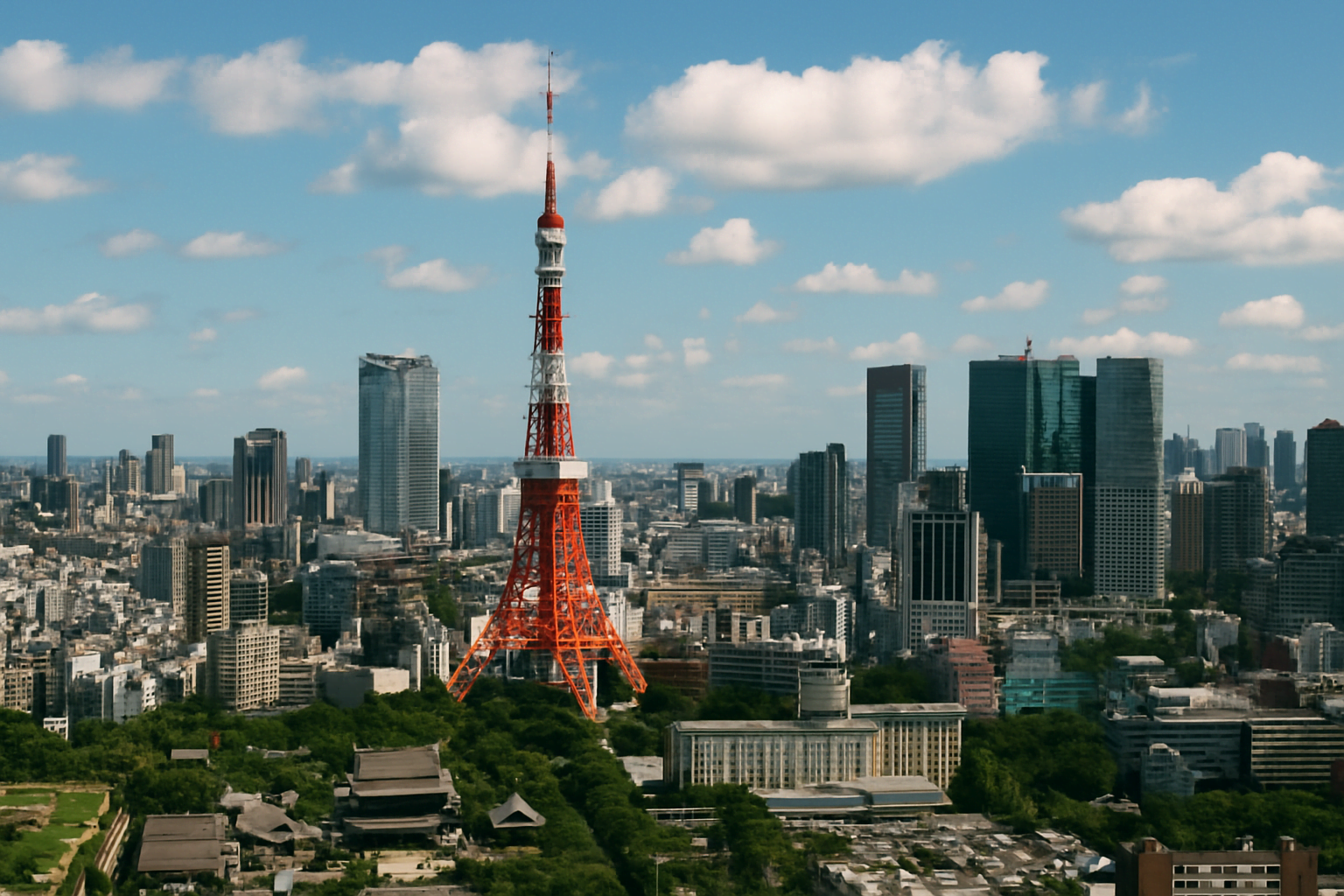Best Time To Visit Tokyo
The best time to visit Tokyo is during spring (March to May) and autumn (September to November). These months offer mild weather, vibrant cherry blossoms or autumn foliage, and numerous cultural festivals. Summer is hot and humid, while winter is cool but pleasant with fewer crowds. Whether you’re exploring shrines, shopping districts, or Mt. Fuji, choosing the best time to visit Tokyo ensures a comfortable and memorable experience.
Peak, Shoulder, and Off Seasons
Tokyo Monthly Weather
|
Month |
High/Low Temp (°C) |
Avg Rainy Days |
|
January |
10 / 2 |
4 days |
|
February |
11 / 3 |
5 days |
|
March |
14 / 6 |
9 days |
|
April |
19 / 10 |
10 days |
|
May |
23 / 15 |
10 days |
|
June |
26 / 19 |
12 days |
|
July |
30 / 23 |
12 days |
|
August |
31 / 25 |
9 days |
|
September |
27 / 21 |
11 days |
|
October |
21 / 15 |
8 days |
|
November |
17 / 10 |
5 days |
|
December |
12 / 5 |
3 days |
Month-by-Month Tokyo Travel Guide
January (Winter)
Bright, crisp skies and New Year celebrations. Visit Meiji Shrine and enjoy seasonal food. Wear layers. Avoid thin jackets—it’s cold at night.
February (Winter)
Quietest month with snow chances. Great for museums and Mt. Fuji views. Try onsen near Tokyo. Avoid long outdoor stays without warm gear.
March (Early Spring)
Cherry blossoms start to bud. Visit Ueno Park. Book hotels early. Carry allergy meds as pollen starts rising.
April (Spring)
Peak sakura bloom. Attend Hanami festivals. Take river cruises under pink trees. Avoid weekends in popular parks—too crowded.
May (Late Spring)
Golden Week draws crowds. Pleasant temps for day trips to Nikko or Hakone. Avoid last-minute bookings.
June (Early Summer/Rainy Start)
Hydrangea season. Carry an umbrella. Visit temples surrounded by blooms. Avoid mountain hikes—slippery trails.
July (Rainy/Summer Start)
Expect heat and humidity. Enjoy Sumida Fireworks Festival. Stay hydrated. Avoid long walks midday.
August (Hot Summer)
Obon holidays bring tradition. Visit lantern festivals. Air conditioning is your friend. Avoid outdoor markets mid-afternoon.
September (Late Summer/Typhoon Season)
Risk of typhoons—check forecasts. Visit Ghibli Museum or indoor attractions. Avoid beach trips.
October (Autumn)
Best month for foliage walks. Try Yoyogi Park. Dress in layers. Avoid heavy jackets—weather’s mild.
November (Autumn)
Leaf-peeping season. Visit Mount Takao. Perfect hiking weather. Avoid late bookings for weekend escapes.
December (Winter Start)
Christmas lights and romantic strolls. Explore Tokyo Midtown. Pack warm clothes. Avoid late-night outdoor events without jackets.
Festivals in Tokyo
1) Sakura Matsuri
Ueno Park (Late March–Early April)
➤ Experience hanami parties under cherry trees.
2) Sumidagawa Fireworks Festival
Sumida River (Last Saturday of July)
➤ Japan’s oldest fireworks display lights up the Tokyo sky.
3) Tokyo International Film Festival
Roppongi Hills (Late October)
➤ Premier showcase for global and Japanese films.
4) Kanda Matsuri
Kanda Shrine (Mid-May, Odd Years)
➤ Historical parades and mikoshi carrying through the streets.
5) Sanja Matsuri
Asakusa (Mid-May)
➤ Traditional festival with 100+ portable shrines and dancers.
Travel Tips Before Visiting Tokyo
Conclusion
The best time to visit Tokyo depends on your travel style. Spring and autumn offer ideal weather and stunning landscapes, while winter is peaceful and budget-friendly. Summer is hot but culturally rich. Plan your trip around festivals, avoid typhoon season, and pack appropriately. Tokyo’s fusion of tradition and innovation makes it a year-round destination—but timing can elevate your experience.
F.A.Q’s
Visit: HOME PAGE

